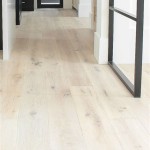Vinyl Floor PVC HS Code in the USA for 2024: A Comprehensive Guide
The Harmonized System (HS) Code is an internationally standardized system of names and numbers used to classify traded products. It is maintained by the World Customs Organization (WCO) and is used by customs authorities worldwide to identify products when assessing duties and taxes and for gathering statistics. Understanding the correct HS code for vinyl flooring, particularly PVC vinyl flooring, is crucial for businesses involved in importing, exporting, and distributing these products in the United States in 2024. Misclassification can lead to incorrect duty rates, delays in customs clearance, and even penalties. This article provides a detailed examination of the relevant HS codes for PVC vinyl flooring in the USA, along with relevant considerations for accurate classification.
Vinyl flooring, encompassing products made predominantly of polyvinyl chloride (PVC), is a popular choice for residential and commercial applications due to its durability, water resistance, and aesthetic versatility. The correct HS code is dependent on the specific construction and characteristics of the vinyl flooring product. The United States utilizes the Harmonized Tariff Schedule of the United States (HTSUS), which is based on the international HS system but includes additional subdivisions for tracking specific products relevant to US trade. Therefore, knowing the relationship between the international HS code and the HTSUS code is necessary for accurate classification.
The primary chapter for vinyl flooring within the HTSUS is Chapter 39, which covers plastics and articles thereof. Within Chapter 39, several headings and subheadings relate to floor coverings, including those made of PVC. These headings differentiate based on factors like whether the flooring is in rolls or tiles, whether it is self-adhesive, and the specific composition of the plastic.
Key Considerations for HS Code Classification of Vinyl Flooring
Selecting the appropriate HS code for vinyl flooring requires careful consideration of several factors. These factors go beyond just identifying the material as "PVC" and demand a detailed examination of the product's attributes. The following are essential elements to contemplate:
- Form of the Flooring: Rolls vs. Tiles/Planks: The form in which the vinyl flooring is imported significantly impacts the HS code. Vinyl flooring presented in rolls typically falls under different subheadings than flooring presented as tiles or planks. This distinction is important because customs authorities use the packaging and form to determine the product's intended use and application. Products in rolls are often considered for larger area applications, while tiles or planks are seen as for modular installation.
- Composition and Construction: The precise composition of the vinyl flooring, including the percentage of PVC and any other materials present, is a crucial determinant. Some vinyl flooring products may include layers of other materials, such as a backing layer made of felt or a wear layer made of polyurethane. These additional materials can influence the correct HS code, particularly if they represent a significant portion of the product's overall composition. The presence of additives, such as plasticizers or stabilizers, while common in PVC, generally does not change the fundamental classification as a plastic product.
- Whether Self-Adhesive or Not: Vinyl flooring that is self-adhesive, meaning it has a pre-applied adhesive backing, is classified differently than flooring that requires a separate adhesive for installation. Self-adhesive flooring often falls under specific subheadings within Chapter 39 that address products with adhesive layers. This distinction is vital because the adhesive component adds functionality, affecting the way the product is ultimately used and classified.
- Surface Characteristics and Treatment: The surface characteristics of the vinyl flooring, such as whether it is embossed, printed, or otherwise treated, can also play a role in determining the correct HS code. For example, flooring that has been printed with a decorative pattern or embossed to mimic the texture of wood or stone may be classified differently than plain, unadorned flooring. The degree of processing applied to the surface is a factor considered in the HTSUS.
Specific HTSUS Codes Relevant to PVC Vinyl Flooring
Within Chapter 39 of the HTSUS, several specific subheadings are frequently used for classifying PVC vinyl flooring. These subheadings are organized hierarchically, starting with broad headings and becoming more specific as you move down the classification system. The following list details some of the most relevant HTSUS codes for PVC vinyl flooring and provides explanations for their application:
- 3918.10.00: This HTSUS code covers floor coverings of plastics, whether or not self-adhesive, in rolls or in the form of tiles. This is a broad category and often serves as a starting point for classifying vinyl flooring. If the flooring meets the general description of plastic floor coverings in rolls or tiles, further analysis is needed to determine if a more specific subheading applies.
- 3918.10.10: Within 3918.10.00, this subheading is often used for flexible floor coverings of PVC, not combined with other materials. It is suitable for homogeneous PVC flooring where the main component is PVC, without significant layers of other substances.
- 3918.10.20: This subheading applies to self-adhesive floor coverings of plastics, in rolls or tiles. It includes vinyl flooring with a pre-applied adhesive backing. The presence of the self-adhesive layer is the key determinant here.
- 3918.90.00: This HTSUS code covers wall or ceiling coverings of plastics. Though primarily focused on wall coverings, this can come into play if the vinyl product is suitable for walls as well and being imported explicitly for that purpose.
- 3926.90.99: This is a "basket" provision for articles of plastics not elsewhere specified or included. While less common, it might be used for unique vinyl flooring products that don't neatly fit into the more specific subheadings. Consultation with a customs broker is advisable if considering this classification.
These are not the only possible HTSUS codes, and the appropriate code can depend on the exact characteristics of the flooring. It is crucial to consult the full HTSUS document and any relevant rulings or guidance from U.S. Customs and Border Protection (CBP) to ensure accurate classification.
The Importance of U.S. Customs and Border Protection (CBP) Rulings
CBP issues rulings on classification matters, providing legally binding interpretations of the HTSUS. These rulings can be invaluable in determining the correct HS code for a specific product. Rulings often address similar products, clarifying the application of specific subheadings. Searching the CBP rulings database for vinyl flooring products with similar characteristics to the item being imported or exported can help ensure accurate classification.
These rulings are based on real-world scenarios and offer insights into how CBP interprets the HTSUS. They often provide detailed descriptions of the products in question and the reasoning behind the classification decision. Analyzing these rulings can help businesses understand CBP's perspective on specific features that influence classification.
Moreover, if uncertainty remains after researching existing rulings, businesses can request a binding ruling from CBP themselves. This process involves submitting a detailed description of the product, including its composition, construction, and intended use. CBP will then issue a formal ruling that is binding on all future imports of the same product. While the process can take time, it provides certainty and can prevent potential disputes during customs clearance.
Consequences of Incorrect HS Code Classification
Using the wrong HS code for vinyl flooring can have significant consequences for importers and exporters. These consequences can range from financial penalties to delays in customs clearance and even legal action. Therefore, it's crucial to prioritize accuracy and due diligence in HS code classification.
One of the most common consequences is the assessment of incorrect duty rates. Different HS codes are associated with different duty rates, and using the wrong code can result in paying too much or too little in duties. If CBP determines that an importer has underpaid duties due to misclassification, they may assess penalties and interest on the unpaid amount. These penalties can be substantial, especially if the misclassification is deemed intentional or negligent.
Incorrect classification can also lead to delays in customs clearance. If CBP suspects that a product has been misclassified, they may subject it to additional scrutiny and examination. This can delay the release of the shipment and disrupt supply chains. In some cases, CBP may even seize the goods pending further investigation.
In more serious cases, incorrect HS code classification can result in legal action. If CBP believes that an importer has intentionally misrepresented the classification of a product to evade duties or taxes, they may pursue criminal charges. This can result in significant fines and even imprisonment.
To avoid these consequences, it's essential to invest in proper HS code classification training for employees involved in importing and exporting. Businesses should also establish internal procedures for reviewing and verifying HS codes before submitting them to customs authorities. Consulting with a qualified customs broker or trade compliance specialist can also help ensure accuracy and compliance.
Utilizing Resources for Accurate Classification
Several resources are available to assist businesses in accurately classifying vinyl flooring under the HTSUS. These resources include the official HTSUS document, CBP rulings, and professional guidance from customs brokers and trade compliance specialists.
The official HTSUS document is the primary source for HS code classifications. It provides detailed descriptions of products and the corresponding codes. However, the HTSUS can be complex and difficult to navigate, so it's essential to understand its structure and terminology.
CBP rulings provide valuable insights into how CBP interprets the HTSUS. These rulings can be searched online and offer practical examples of how specific products are classified. Reviewing these rulings can help clarify any ambiguities in the HTSUS and ensure accurate classification.
Consulting with a qualified customs broker or trade compliance specialist can provide expert guidance on HS code classification. These professionals have extensive knowledge of the HTSUS and CBP regulations. They can help businesses navigate the complexities of the classification process and ensure compliance with all applicable laws and regulations. They can also assist in requesting binding rulings from CBP if necessary.

2024 Vinyl Pvc Floating Flooring Made From Virgin Materials Laminate And Spc

Rigig Vinyl Tile Composite Decking Pvc Floor Mat

Factory Whole Eco Friendly Pvc Spc Flooring Wood Texture Vinyl Plank Manufacturer And

Rigig Vinyl Tile Composite Decking Pvc Floor Mat Flooring And Spc

Rigig Vinyl Tile Composite Decking Pvc Floor Mat Flooring And Spc

Gitia High Performance Lock Wood Grain Spc Vinyl Flooring And

Factory Direct Spc Floor Tile Pvc Vinyl Flooring And
Pvc Flooring Imports In United States Volza

5mm Plastic Spc Pvc Vinyl Flooring For Ixpe Underlayment Www Com

Vinyl Floor Plank Pxpvcfloor Com
Related Posts








